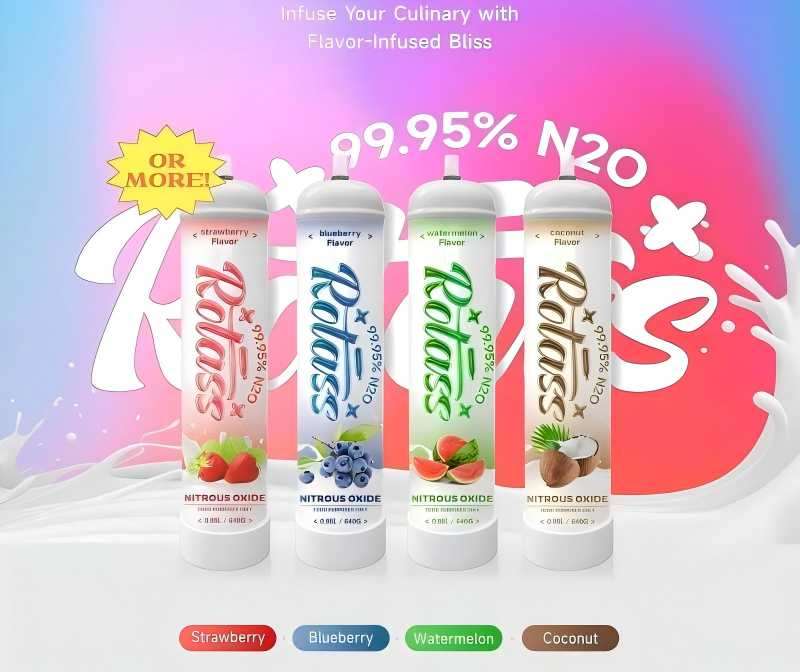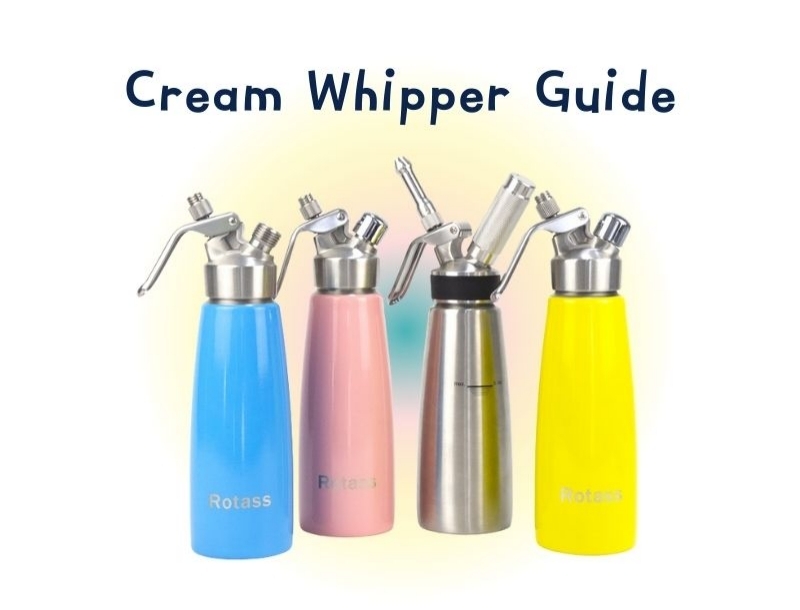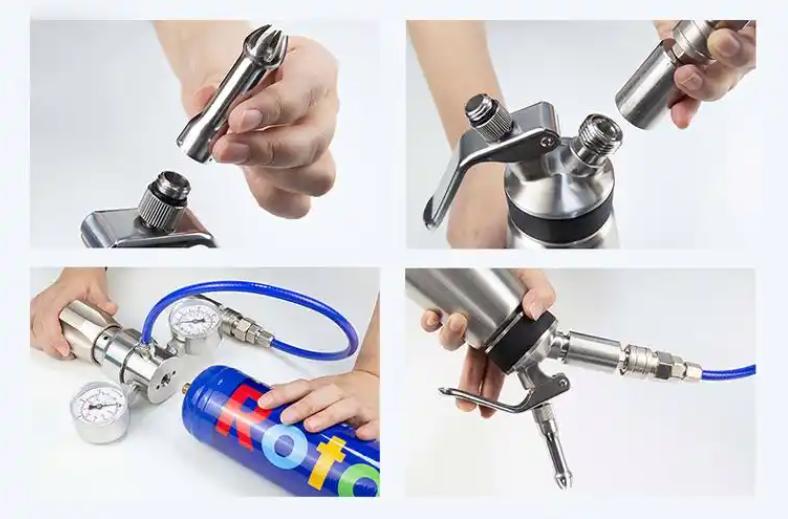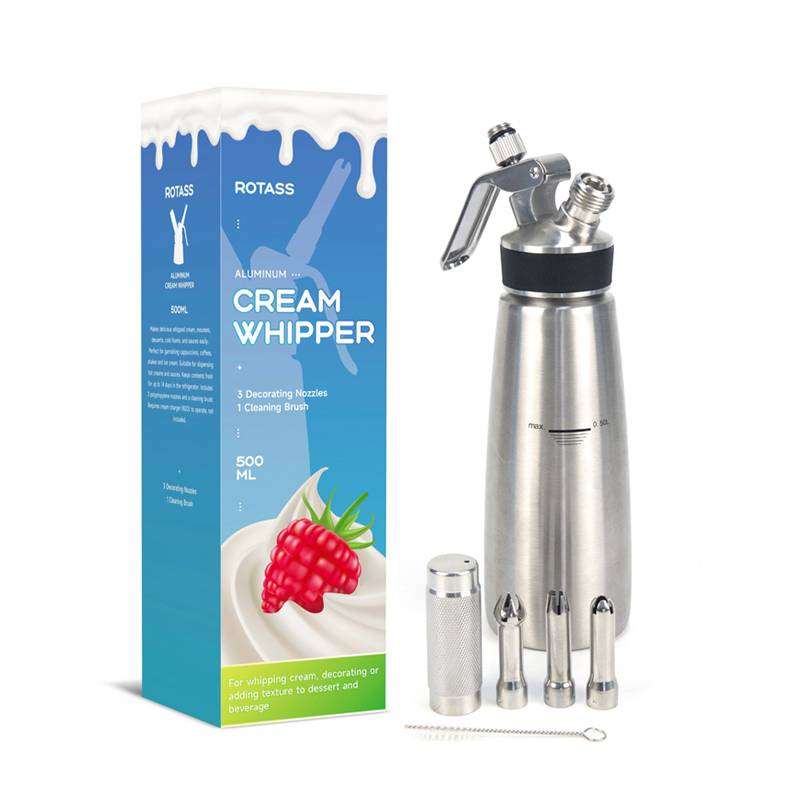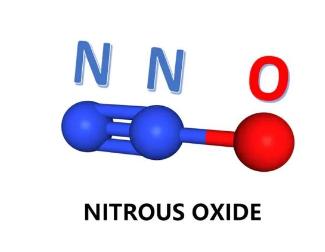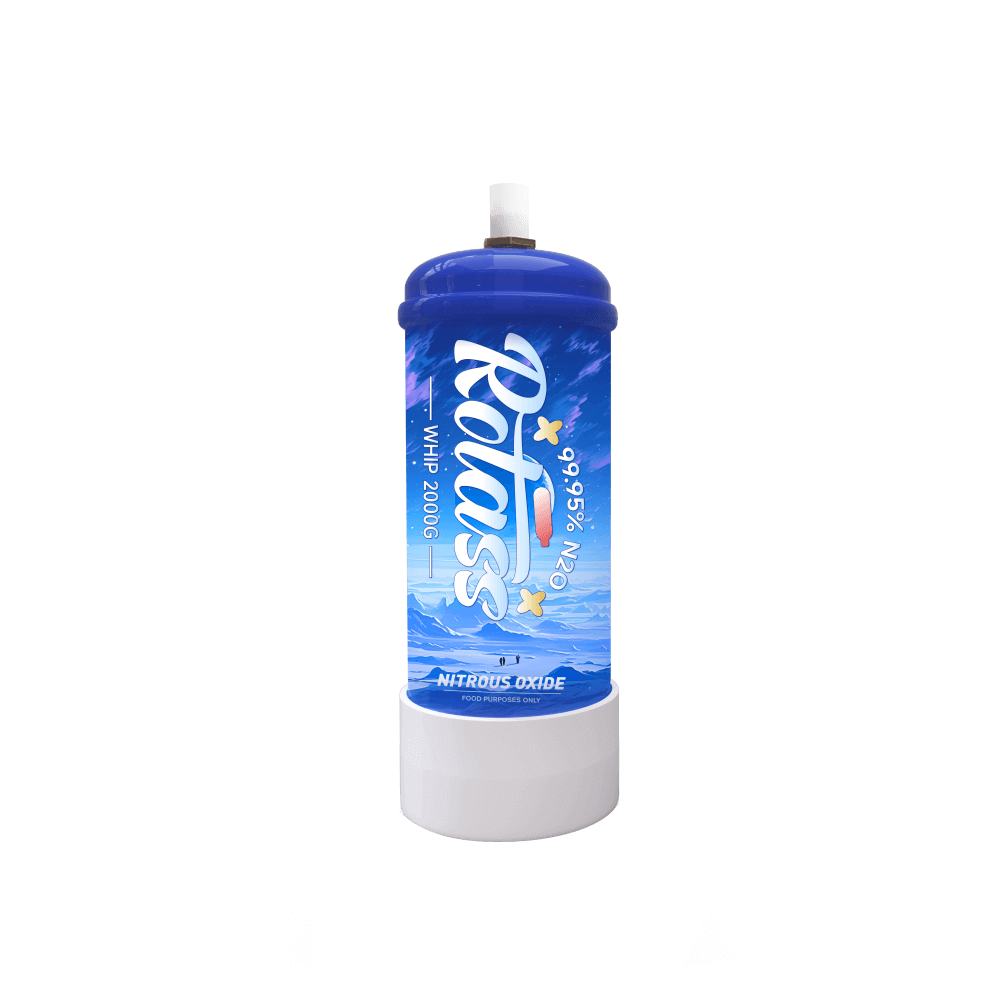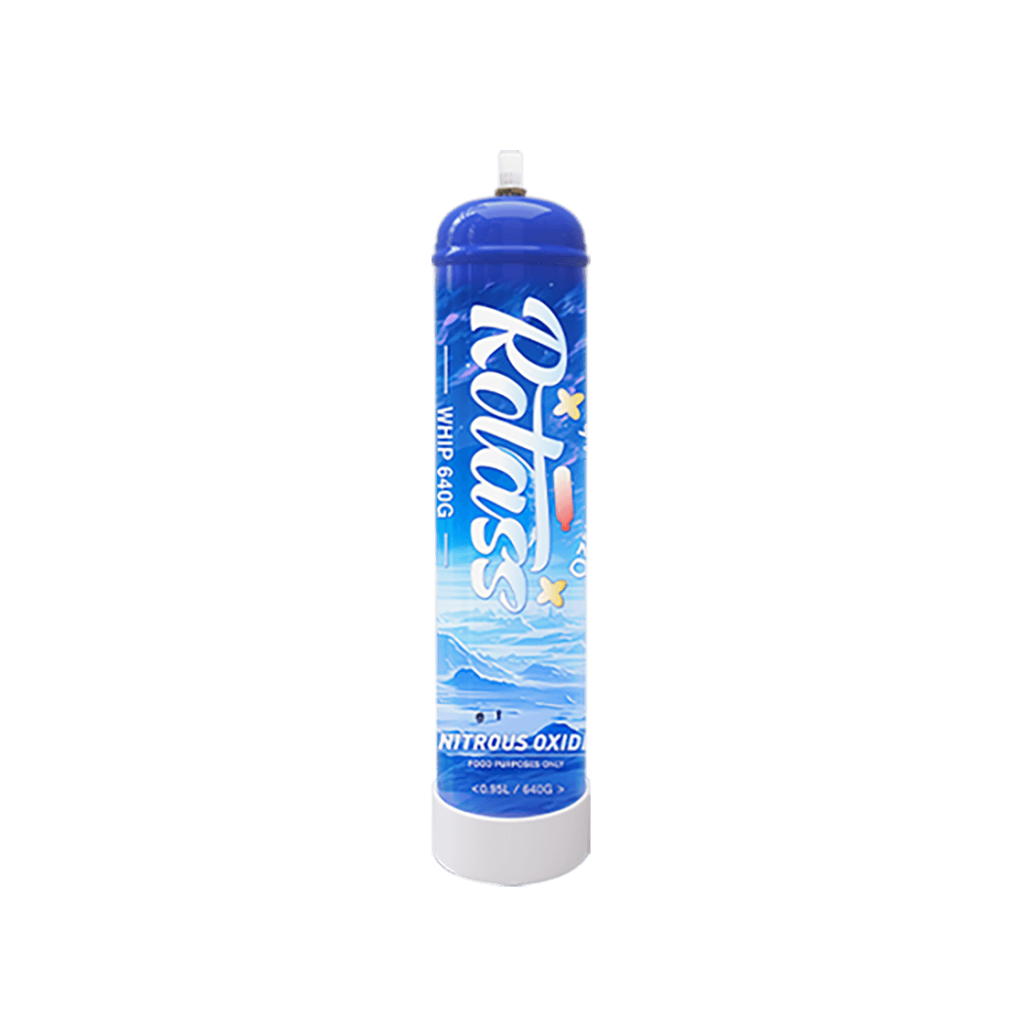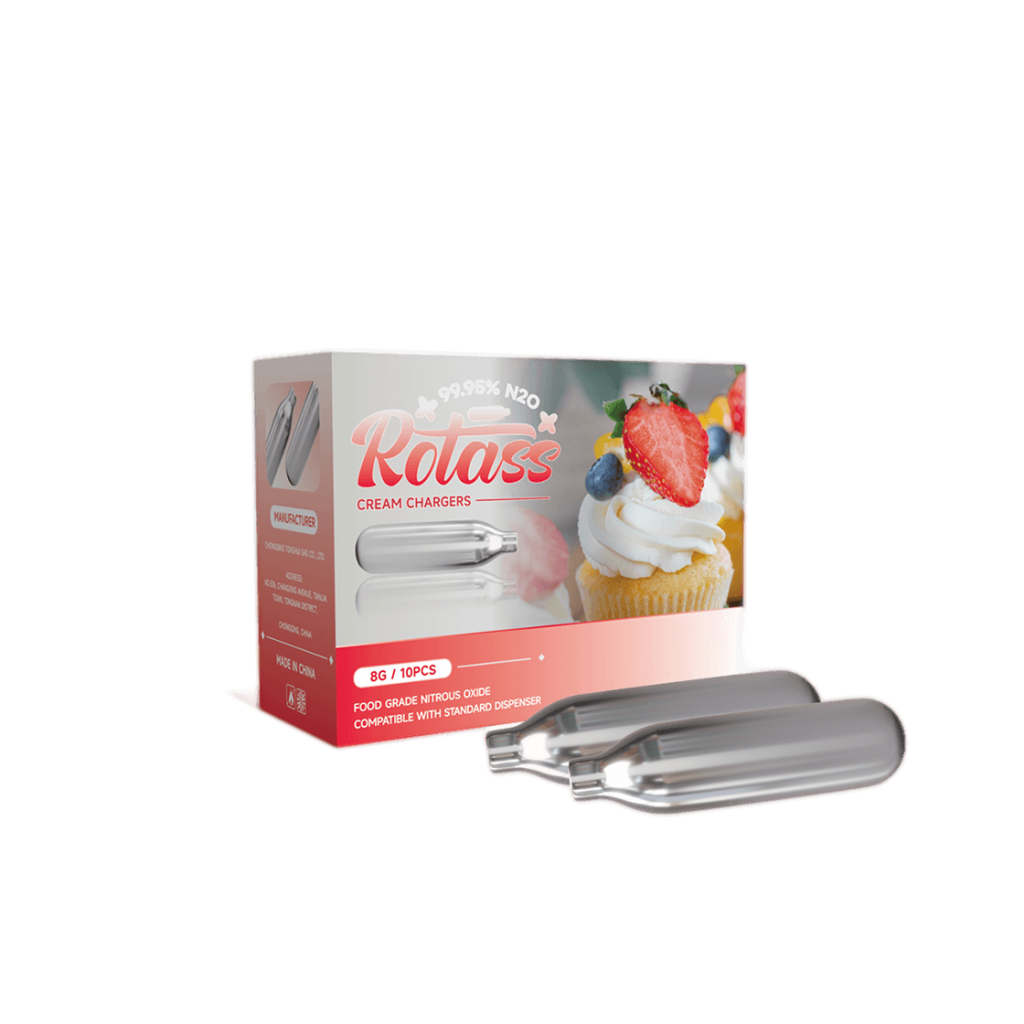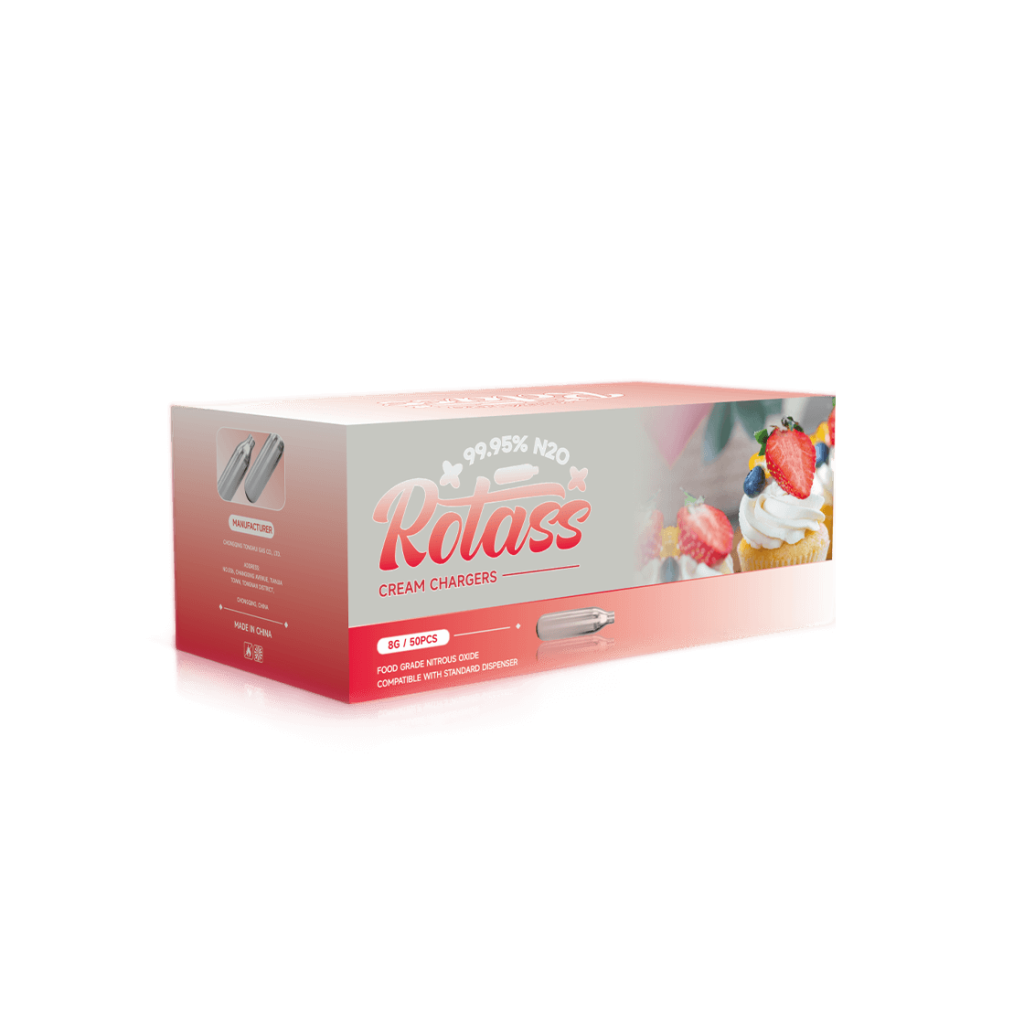2025 / 02 / 17
When to Choose a Nitrous Oxide Canister Rather Than Cream Chargers?
Table of Contents
Nitrous oxide (N2O) is the key ingredient behind these culinary magic tricks, and while small, convenient cream chargers are a familiar sight in home kitchens, a larger, more powerful option exists: nitrous oxide canisters. Cream chargers, those small, silvery cartridges, have become synonymous with whipped cream dispensers, offering a quick and easy way to add a touch of luxury to desserts and drinks. But what if your needs extend beyond a single dollop of whipped cream?
This article will delve into the world of nitrous oxide canisters, exploring when they become the superior choice over their smaller cream charger counterparts. We’ll examine key factors such as volume, cost-effectiveness, specific applications, and, importantly, safety considerations, to help you determine the best option for your culinary or other N2O-related needs.
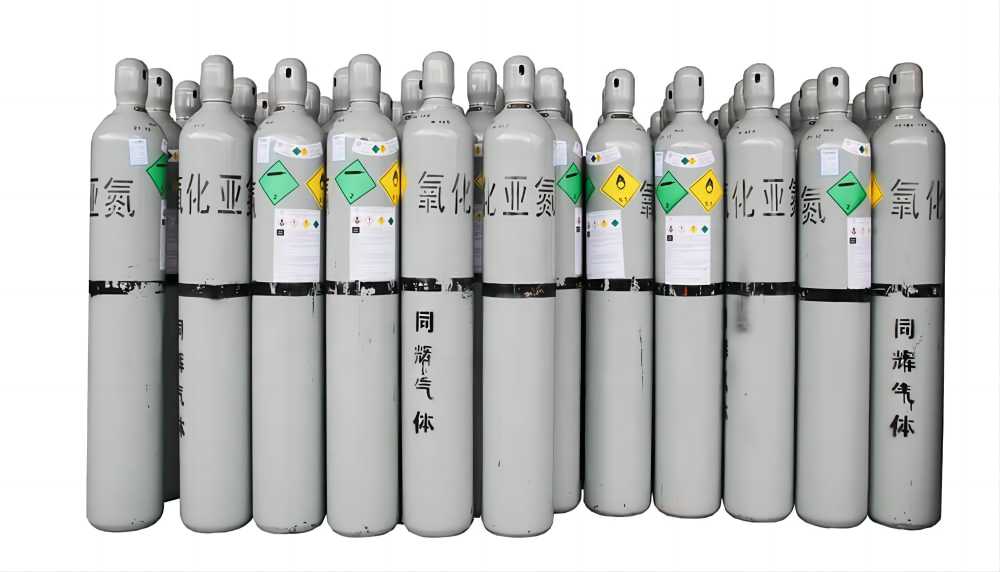
Pros & Cons of Cream Chargers
Advantages of Cream Chargers:
- Convenience for Small-Scale Use: For occasional users or small batches of whipped cream, cream chargers are incredibly convenient. They are readily available in many stores, both online and brick-and-mortar, and require minimal setup.
- Ease of Use and Availability: Cream chargers are designed for simplicity. They are easy to load into a dispenser, making the process of whipping cream quick and straightforward. Their widespread availability makes them a practical choice for home use.
- Portability: Their small size makes cream chargers highly portable. They are easy to transport, making them suitable for situations where you need whipped cream on the go (e.g., picnics, camping).
Disadvantages of Cream Chargers:
Limited Volume for Larger Projects: For larger volumes of whipped cream or other N2O applications, using individual cream chargers becomes cumbersome and time-consuming. The constant need to replace cartridges can interrupt the workflow.
Potential for Higher Cost per Volume Compared to Canisters: While the initial cost of a cream charger is low, the cost per gram of N2O is significantly higher than that of larger canisters, especially for frequent users. Over time, this can make cream chargers a less economical option.
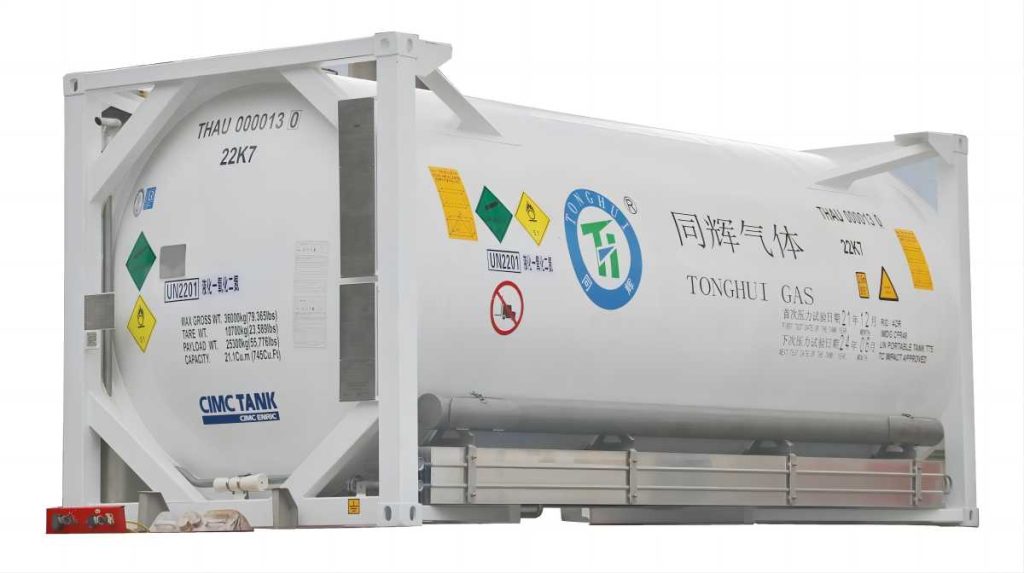
Pros & Cons of Nitrous Oxide Canisters
Advantages of Nitrous Oxide Canisters:
- Cost-Effectiveness for Large-Scale or Frequent Use: For businesses or individuals who use N2O frequently or in large quantities, canisters offer significant cost savings compared to cream chargers. The price per gram of N2O is considerably lower in bulk.
- Higher Volume Capacity, Suitable for Professional Settings: The larger capacity of canisters makes them ideal for professional kitchens, restaurants, bars, and other settings where large volumes of whipped cream or other N2O-infused products are needed. This reduces the downtime associated with constantly replacing small cream chargers.
- Potentially More Environmentally Friendly (Refillable Options): Many nitrous oxide canisters are refillable, reducing the amount of waste generated compared to single-use cream chargers. This makes them a more environmentally conscious choice for frequent users. Even non-refillable larger canisters represent less waste per volume of N2O than individual chargers.
- Availability of Different Sizes and Purities: Nitrous oxide canisters are available in a range of sizes to suit different needs, from smaller, portable options to large, stationary tanks. They are also available in different purities, allowing users to select the appropriate grade for their specific application (e.g., food-grade for culinary uses).
Disadvantages of Nitrous Oxide Canisters:
- Requires Additional Equipment (Regulators, Dispensers): Using nitrous oxide canisters typically requires additional equipment, such as regulators to control the gas pressure and specialized dispensers for different applications. This adds to the initial setup cost.
- Potentially Higher Initial Setup Cost: The initial investment in a canister, regulator, and dispensing equipment can be higher than simply purchasing a whipped cream dispenser that uses cream chargers. However, this cost is often offset by the long-term savings for frequent users.
- Storage and Handling Considerations (Safety): Nitrous oxide is a pressurized gas, and as such, requires careful handling and storage. Canisters should be stored in a cool, well-ventilated area, away from heat sources. It’s crucial to follow safety guidelines and use appropriate equipment to avoid accidents. Improper handling can pose risks, including frostbite from rapid gas expansion or, in extreme cases, the potential for explosion due to overpressure.
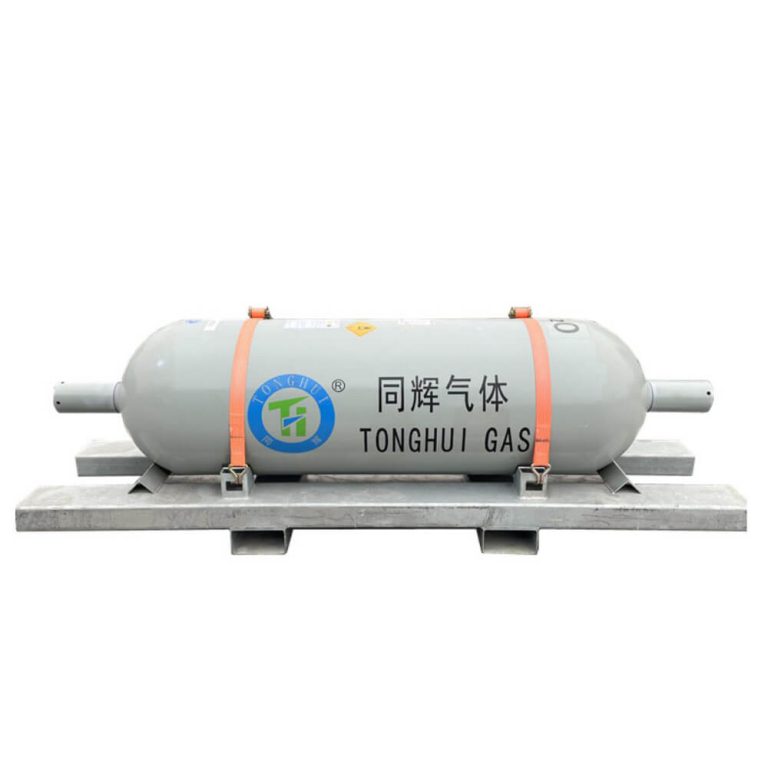
When to Choose a Nitrous Oxide Canister
The decision to choose a nitrous oxide canister over cream chargers hinges primarily on the scale and frequency of your N2O use. Here’s a breakdown of key factors to consider:
- Volume: If you regularly require large quantities of whipped cream, infused beverages, or other N2O-related products, canisters are the clear winner. Think of restaurants, bars, catering companies, or even large families who frequently entertain.
- Cost-Effectiveness: While the initial setup cost for a canister system (including the canister, regulator, and dispenser) might be higher, the long-term cost savings are significant for frequent users. The price per gram of N2O in a canister is substantially lower than in individual cream chargers.
- Specific Applications: Beyond volume and cost, certain applications lend themselves better to canisters.
- Large-Scale Food Production: Food manufacturers who use N2O in their products (e.g., whipped toppings, aerosol propellants) rely on large, industrial-sized canisters for continuous, high-volume production.
- Industrial Applications: N2O has various industrial uses beyond food and beverage, such as in certain types of welding or as an oxidizer in rocketry. These applications almost always necessitate the use of larger canisters.
- Specialized Culinary Techniques: Some advanced culinary techniques, such as rapid infusion or creating foams and airs, may require the higher pressure and flow rate that canisters can provide, making them more suitable than cream chargers.
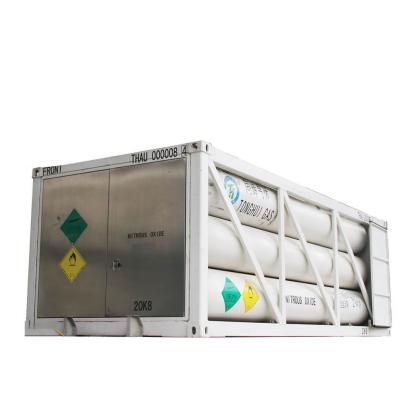
Summary
Cream chargers offer convenient portability for small-scale, infrequent N2O use, primarily for whipped cream. Their ease of use makes them suitable for home kitchens. However, their limited volume and higher N2O cost per unit make them less practical for frequent use. Conversely, nitrogen oxide canisters are cost-effective and efficient for high-volume needs. Their larger capacity and refillable options are ideal for professional settings like restaurants and bars, significantly reducing costs and environmental impact.
Therefore, choose cream chargers for occasional use, but opt for canisters if you’re a professional or frequent user needing larger N2O quantities. Consider your volume, budget, and usage frequency. If uncertain, consult a food service professional or N2O supplier. Explore various canister options to find the best fit for your needs and ensure safe operation.

